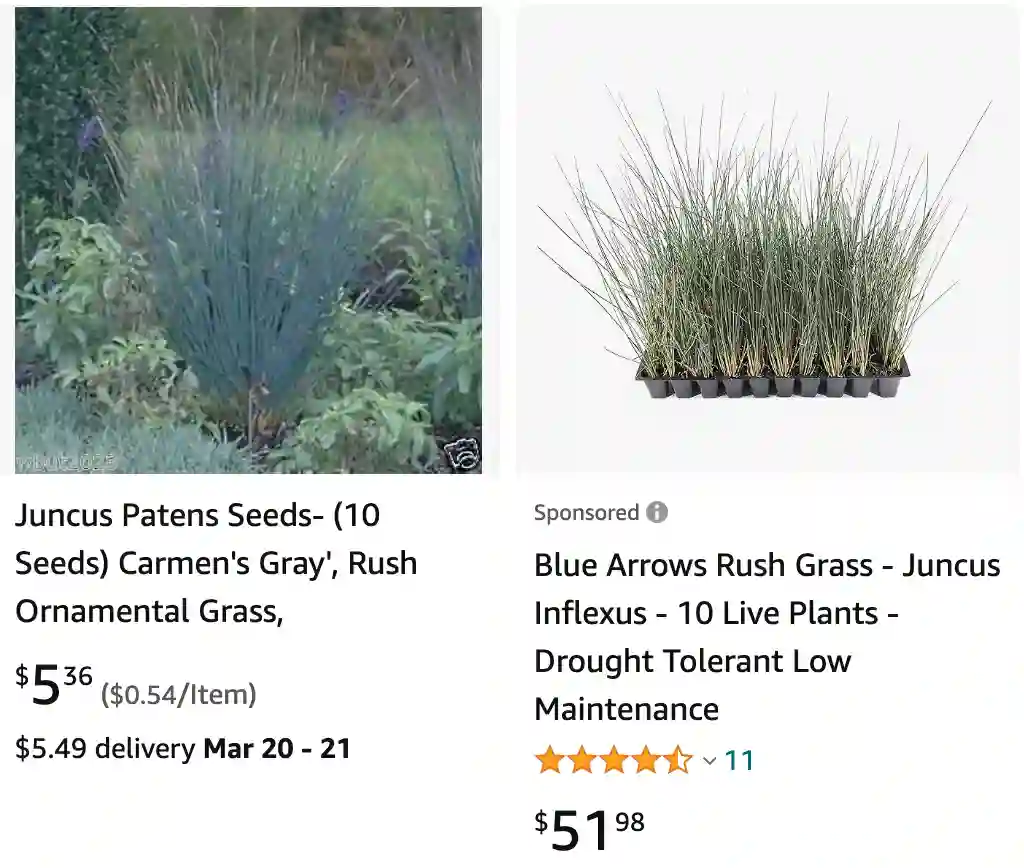
Juncus Patens: A Versatile Grass-Like Perennial for Your Garden
As a landscape designer, I’m constantly on the lookout for plants that offer both beauty and function. Juncus patens, also known as spreading rush or California gray rush, has become a favorite of mine for its unique texture, adaptability, and low-maintenance needs.
This evergreen perennial isn’t a true grass, but its slender, upright stems and soft blue-green color create a similar effect. It thrives in various conditions, making it a versatile addition to many garden styles.
Here, I’ll share my experience with Juncus patens, covering its characteristics, care requirements, and some ideas for incorporating it into your landscape design.
366 Species in Genus Juncus
What is Juncus Patens?
Native to the West Coast of North America, Juncus patens is a clump-forming perennial that typically reaches 18-24 inches in height and spreads 1-2 feet wide. Its soft, round stems lack leaves, giving it a clean, minimalist look. Inconspicuous, golden-brown flower clusters appear throughout spring and summer, adding a subtle touch of color.
Perhaps the most appealing feature of Juncus patens is its adaptability. It tolerates full sun to part shade and thrives in moist to well-drained soil. This makes it a valuable option for areas that receive less sunlight or tend to get dry during hot summers.
How to Care for Juncus Patens?
Juncus patens is a low-maintenance plant that requires minimal effort to thrive. Here’s what you need to know:
- Planting: Choose a location that receives at least 4-6 hours of sunlight daily. Juncus patens tolerates various soil types but prefers well-drained soil. Amending heavy clay soils with compost or sand can improve drainage.
- Watering: Water regularly, especially during the first growing season, to establish a strong root system. Once established, Juncus patens is drought tolerant and requires infrequent watering, particularly in cooler climates.
- Fertilizing: This plant is not a heavy feeder and doesn’t require regular fertilization. A light application of balanced fertilizer in early spring is sufficient.
How to Prune Juncus Patens?
Juncus patens requires minimal pruning. However, if the foliage becomes brown or overgrown, you can trim it back in late winter or early spring. Use sharp pruners to remove dead or unsightly stems at the base.
How to Propagate Juncus Patens?
Juncus patens can be easily propagated by division in spring or fall. Simply dig up a mature clump and carefully divide it into sections, ensuring each section has healthy roots and stems. Replant the divisions in prepared soil and water them regularly until established.
What to Plant with Juncus Patens?
Juncus patens’ cool color and textural contrast make it a great companion plant for various flowering perennials and ornamental grasses. Here are some ideas for creating stunning combinations:
- For a vibrant display: Pair Juncus patens with colorful perennials like lavender, coreopsis, or salvia.
- For a low-maintenance combination: Plant it alongside ornamental grasses like blue fescue, maiden grass, or switchgrass.
- For a water-wise garden: Combine Juncus patens with drought-tolerant succulents like aloe vera, yucca, or sedum.
Design Ideas with Juncus Patens
The versatility of Juncus patens allows it to be incorporated into various garden styles. Here are some ways to use it in your landscape:
- Create a border: Plant Juncus patens along walkways, flower beds, or driveways to add definition and texture.
- Fill in empty spaces: Use it to fill gaps between taller plants or soften the edges of hardscapes.
- Add texture to container gardens: The unique form of Juncus patens adds a touch of interest to container plantings, complementing flowering annuals or perennials.
Conclusion
Juncus patens is a valuable addition to any garden. Its low-maintenance nature, adaptability, and unique texture make it a versatile plant for both novice and experienced gardeners. With a little planning and care, Juncus patens can bring a touch of cool elegance and year-round interest to your outdoor space.
If i die, water my plants!



